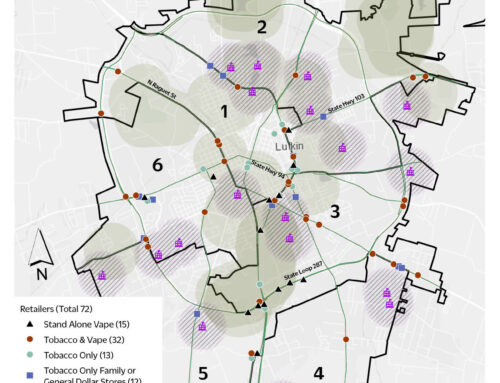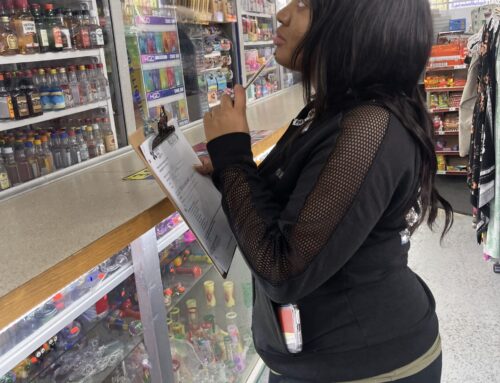The Geographic Health Equity Alliance (GHEA) and Counter Tools facilitated the inaugural Geographic Surveillance Learning Collaborative for National Tobacco Control Programs and National Comprehensive Cancer Control from May to September 2020. In order to participate, interested states were required to establish a three-person team consisting of a statewide representative from each of the following fields: (1) tobacco control, (2) comprehensive cancer control and (3) epidemiology or related field that handles the development of statewide geospatial tools.
Seven states participated in the Year 1 Collaborative: Alaska, Florida, Georgia, Indiana, Iowa, West Virginia and Wisconsin. Each team was responsible for collaborating across departments (tobacco control, comprehensive cancer and epidemiology) to create a presentation highlighting examples of their use of geographic surveillance systems. Teams shared how they used geographic surveillance to support program planning, identify health disparities and improve communication strategies and policy efforts. Along with presentations from participating states, each monthly collaborative session featured dedicated time for questions and peer-to-peer networking. The Year 1 Collaborative also included two presentations from national experts representing the Policy Surveillance Program at the Center for Public Health Law Research and the Center for Disease Control’s U.S. Cancer Statistics.
Last month, we highlighted geographic surveillance activities of the cancer control programs in Alaska, Iowa and Wisconsin. This month, we are highlighting some geographic surveillance efforts by the tobacco control programs of Florida, Georgia and Indiana.
Geographic Surveillance in Tobacco Control Programs
Participants in our inaugural Geographic Surveillance Learning Collaborative demonstrated a variety of ways geosurveillance was incorporated into their tobacco control programs. From visualizing tobacco retailer data to mapping tobacco-free policies, tobacco control programs have found unique ways to visualize different types of tobacco data. Below are a few examples of these strategies:
Florida
The Florida Community Health Assessment Resource Tool, known as Florida CHARTS, is a website managed by the Division of Public Health Statistics and Performance Management at the Florida Department of Health. The tool incorporates a number of data sources to create reports and maps on a wide variety of topics. For the purpose of the Geographic Surveillance Learning Collaborative, participants were specifically interested in the use of the Florida Youth Tobacco Survey (FYTS) and the Florida Behavioral Risk Factor Surveillance System (BRFSS) as data sources for tobacco use and exposure as well as cancer prevalence and screening indicators. Each year, in collaboration with the programs that collect the data, these indicators are updated with the newest available data. With Florida CHARTS, users are able to stratify data by indicators including county, race, sex and ethnicity. The data can also be exported as an Excel file. The State Department of Health has found Florida CHARTS to be an extremely helpful tool for local health departments interested in utilizing FYTS and BRFSS data.
Georgia
The Georgia Tobacco Use Prevention Program utilizes policy surveillance as a tool for planning, tracking and communicating about school districts that adopt 100% tobacco-free policies. Using a model policy template from the American Nonsmokers Rights Foundation, Georgia coded 13 items to ensure district policies aligned with the 100% tobacco-free model policy. This model policy requires language prohibiting the use of any type of tobacco, including e-cigarettes, for students, staff, faculty and visitors at all times of day and in all facilities. School districts that have not yet met all requirements of the model policy are identified in yellow on the map.
Indiana
The Indiana Department of Health’s Tobacco Control Program uses mapping to understand tobacco retailer density and proximity in Indiana. Using the Standardized Tobacco Assessment for Retail Settings (STARS), Indiana collects data on product availability, pricing, promotion and placement. This data is used to create infographics about tobacco marketing personalized for each of their 43 funded counties. Additionally, through a contract with Counter Tools, Indiana used their data to create static retailer maps for funded counties. These maps show retailer proximity to other retailers at the county-level. The maps provide a snapshot of retailer locations that is often useful for presentations by community partners. More specifically, these maps are frequently used in meetings within the school setting to guide conversations about youth targeting practices.
Stay tuned for details on the upcoming 2021 Learning Collaborative!
This post was originally published as a feature article for The Geographic Health Equity Alliance (GHEA), a CADCA initiative. GHEA is a CDC funded National Network dedicated to reducing geographic health disparities related to tobacco and cancer.







